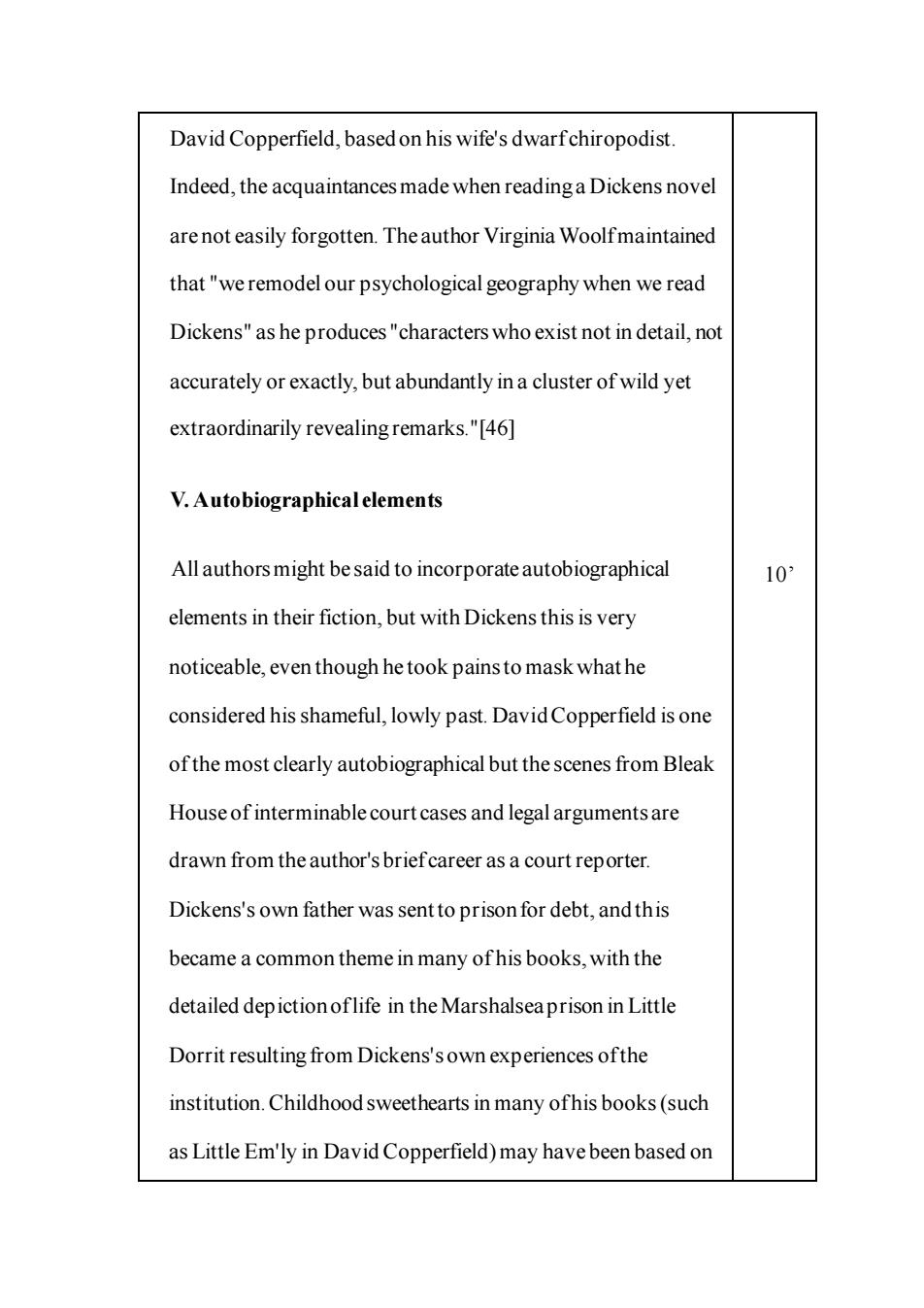
Samuel Pickwick,WackfordSqueers,Uriah Heep are so well known as to be partand parcel of British culture,and in some cases have passed into ordinary language:a scrooge,for example,is a miser The author worked closely with his illustrators supplying them with a summary ofthe work at the outset and thus ensuring that his characters and settings were exactly how he envisioned them.[45]He would brief the illustrator on plans for each month's instalment so that work could begin before he wrote them.Marcus Stone,illustrator ofOur Mutual Friend,recalled that the author was always"ready to describe downto the minutest details thepersonal characteristics,and.life-history of the creations ofhis fancy."[30]This close working relationship is important to readersofDickens today.The illustrations give us a glimpse ofthe charactersas Dickens described them.Film makers still use the illustrationsas a basis for characterisation,costume,and set design Often these characters were based on people he knew.In a few instances Dickens based the character too closely on the original,as in the case of Harold Skimpole in Bleak House, based on James Henry Leigh Hunt,and Miss Mowcher in
Samuel Pickwick, Wackford Squeers, Uriah Heep are so well known as to be part and parcel of British culture, and in some cases have passed into ordinary language: a scrooge, for example, is a miser. The author worked closely with his illustrators supplying them with a summary of the work at the outset and thus ensuring that his characters and settings were exactly how he envisioned them.[45] He would brief the illustrator on plans for each month's instalment so that work could begin before he wrote them. Marcus Stone, illustrator of Our Mutual Friend, recalled that the author was always "ready to describe down to the minutest details the personal characteristics, and . life-history of the creations of his fancy."[30]This close working relationship is important to readers of Dickens today. The illustrations give us a glimpse of the characters as Dickens described them. Film makers still use the illustrations as a basis for characterisation, costume, and set design. Often these characters were based on people he knew. In a few instances Dickens based the character too closely on the original, as in the case of Harold Skimpole in Bleak House, based on James Henry Leigh Hunt, and Miss Mowcher in

David Copperfield,based on his wife's dwarfchiropodist Indeed,the acquaintances made when readinga Dickens novel are not easily forgotten.The author Virginia Woolfmaintained that"we remodel our psychological geography when we read Dickens"as he produces"characters who exist not in detail,not accurately or exactly,but abundantly in a cluster of wild yet extraordinarily revealingremarks."[46] V.Autobiographicalelements All authors might be said to incorporate autobiographical 10 elements in their fiction,but with Dickens this is very noticeable,even though he took pains to mask what he considered his shameful,lowly past.DavidCopperfield is one of the most clearly autobiographical but the scenes from Bleak House of interminable court cases and legal arguments are drawn from the author's briefcareer as a court reporter Dickens's own father was sent to prison for debt,andthis became a common theme in many of his books,with the detailed depictionoflife in the Marshalseaprison in Little Dorrit resulting from Dickens'sown experiences ofthe institution.Childhood sweethearts in many ofhis books(such as Little Em'ly in David Copperfield)may have been based on
David Copperfield, based on his wife's dwarf chiropodist. Indeed, the acquaintances made when reading a Dickens novel are not easily forgotten. The author Virginia Woolfmaintained that "we remodel our psychological geography when we read Dickens" as he produces "characters who exist not in detail, not accurately or exactly, but abundantly in a cluster of wild yet extraordinarily revealing remarks."[46] V. Autobiographical elements All authors might be said to incorporate autobiographical elements in their fiction, but with Dickens this is very noticeable, even though he took pains to mask what he considered his shameful, lowly past. David Copperfield is one of the most clearly autobiographical but the scenes from Bleak House of interminable court cases and legal arguments are drawn from the author's brief career as a court reporter. Dickens's own father was sent to prison for debt, and this became a common theme in many of his books, with the detailed depiction of life in the Marshalsea prison in Little Dorrit resulting from Dickens's own experiences of the institution. Childhood sweethearts in many of his books (such as Little Em'ly in David Copperfield) may have been based on 10’